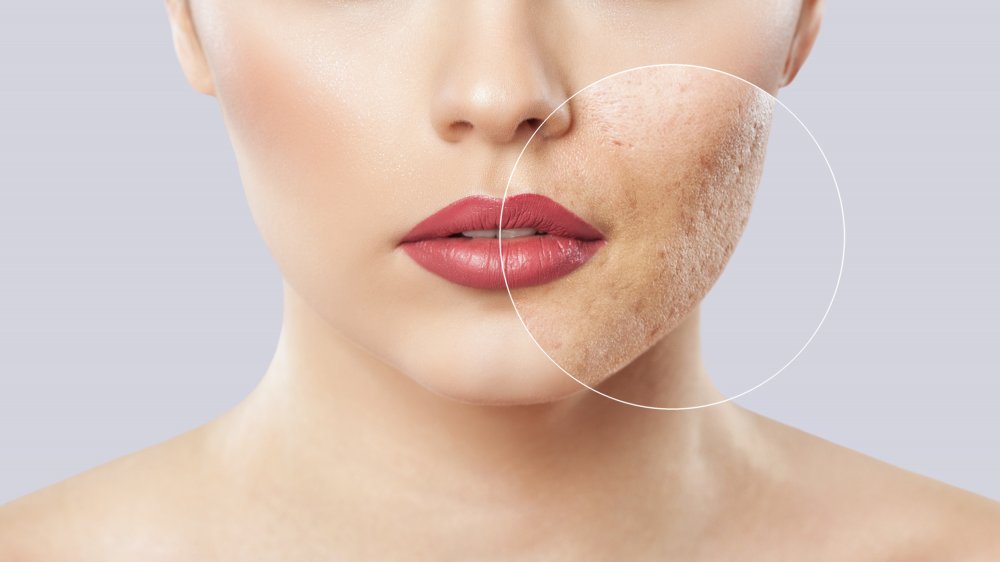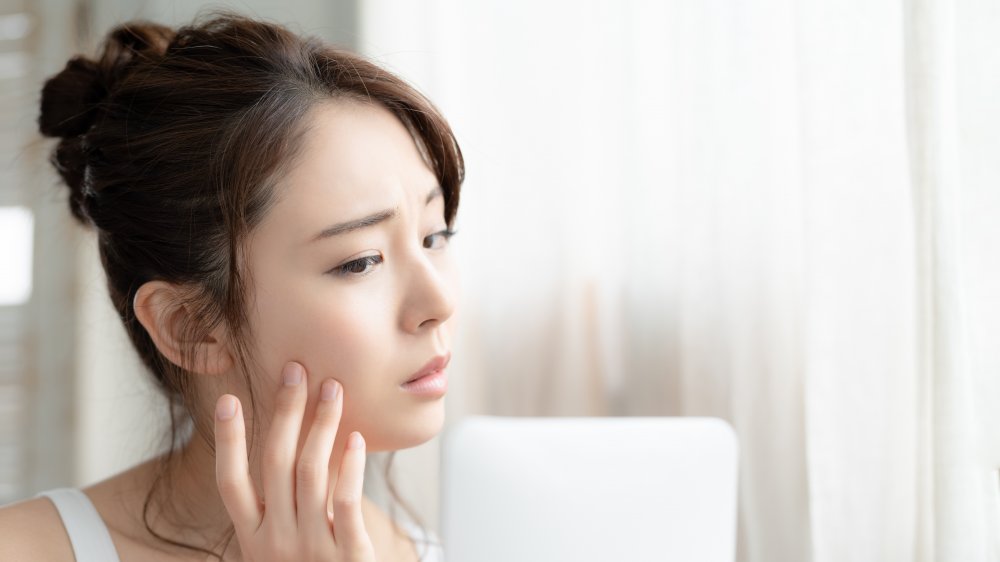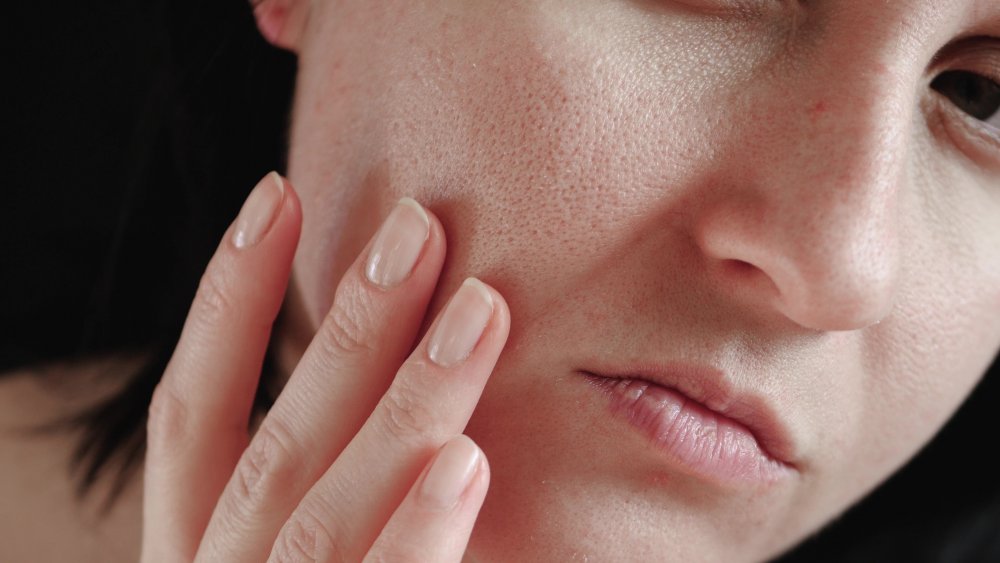Here's What Chin Acne Is Telling You About Your Health
Maybe the first time it happened to us, we were getting ready for a middle school dance, crammed into a friend's tiny bathroom with four other girls as we examined our faces and applied too much blue or silver eyeshadow. Then we saw it: a huge chin pimple. During adolescence it's virtually expected and all but guaranteed. But once we reach adulthood, most of us expect to trade in our acne creams for eye creams. And yet, a slew of us find we need to keep our medicine cabinets stocked with both.
Why are the dermatological gods so cruel, we may wonder, as we stare at our lovely thirty-something faces in our own mirrors, applying just the right amount of flattering eye shadow, and notice it once again — the big honking pimple on our chins. It turns out, the same thing that causes acne in adolescence could be causing it in adulthood: fluctuating hormones.
How to tackle hormonal acne
As it turns out, hormonal acne most commonly appears in adult women ages 20 to 40, and even women well over 40 aren't immune, as this type of acne can spike during the hormonal fluctuations associated with menopause (via Self). In fact, experts estimate that 50% of women ages 20 to 29 have acne while it affects roughly 25% of women ages 40 to 49 (via Healthline).
"The hormones that cause this type of acne are fluctuations of estrogen and progesterone, which both vary widely throughout the menstrual cycle month," S. Manjula Jegasothy, M.D., board-certified dermatologist and founder of Miami Skin Institute told Self. It's believed that these fluctuations can cause increased oil production in the pore, leading to those pesky pimples. Specifically, if your breakouts happen at the same time every month and show up mostly around your chin and jawline, you can make a pretty safe bet that hormonal acne is the type you're dealing with.
So now that you know what you're dealing with, how can you treat it? Unless your hormonal acne is very mild, you might have noticed standard over-the-counter topical medications aren't super helpful. That's because this type of pimple usually forms as cystic bumps, which are deeper under the skin than other types of pimples according to Healthline. Retinoids are more effective at reaching this type of breakout. While plenty of retinoid creams are available over-the-counter, it could be worth discussing a prescription strength cream with a dermatologist.
How to help treat hormonal acne from the inside out
If topical treatments aren't helping and the acne is really becoming a problem, doctors may prescribe medications like hormonal birth control or antiandrogen medications. Some types of birth control like Ortho Tri-Cyclen and YAZ are actually approved by the U.S. Food and Drug Administration for the specific purpose of treating hormonal acne. "These oral contraceptives are composed of ethinyl estradiol plus either theprogestin norgestimate, norethindrone acetate, or drospirenone, which work together to alter levels and activity of hormones that can trigger acne," Dr. Peredo told Self.
Meanwhile, antiandrogen medications like spironolactone are given in low doses to decrease the actions and effects of hormones like testosterone in the body. If these hormones are too high, they are known to cause acne, sometimes rather severe cases. Of course, all pharmaceuticals have side effects, so be sure to talk thoroughly with your doctor to find the right solution for you.
Another way to help reduce hormonal acne flares is medicine free: reducing your stress levels. "Women who are prone to monthly hormonal fluctuations, which are quite steep, and have periods of acute stress, are setting up a 'perfect storm' for themselves to get a hormonal acne flare," Dr. Jegasothy told Self. So meditate, do yoga, get outside, take baths, exercise, sing, whatever it takes to get your stress levels under control, thereby lowering the stress hormone cortisol.


